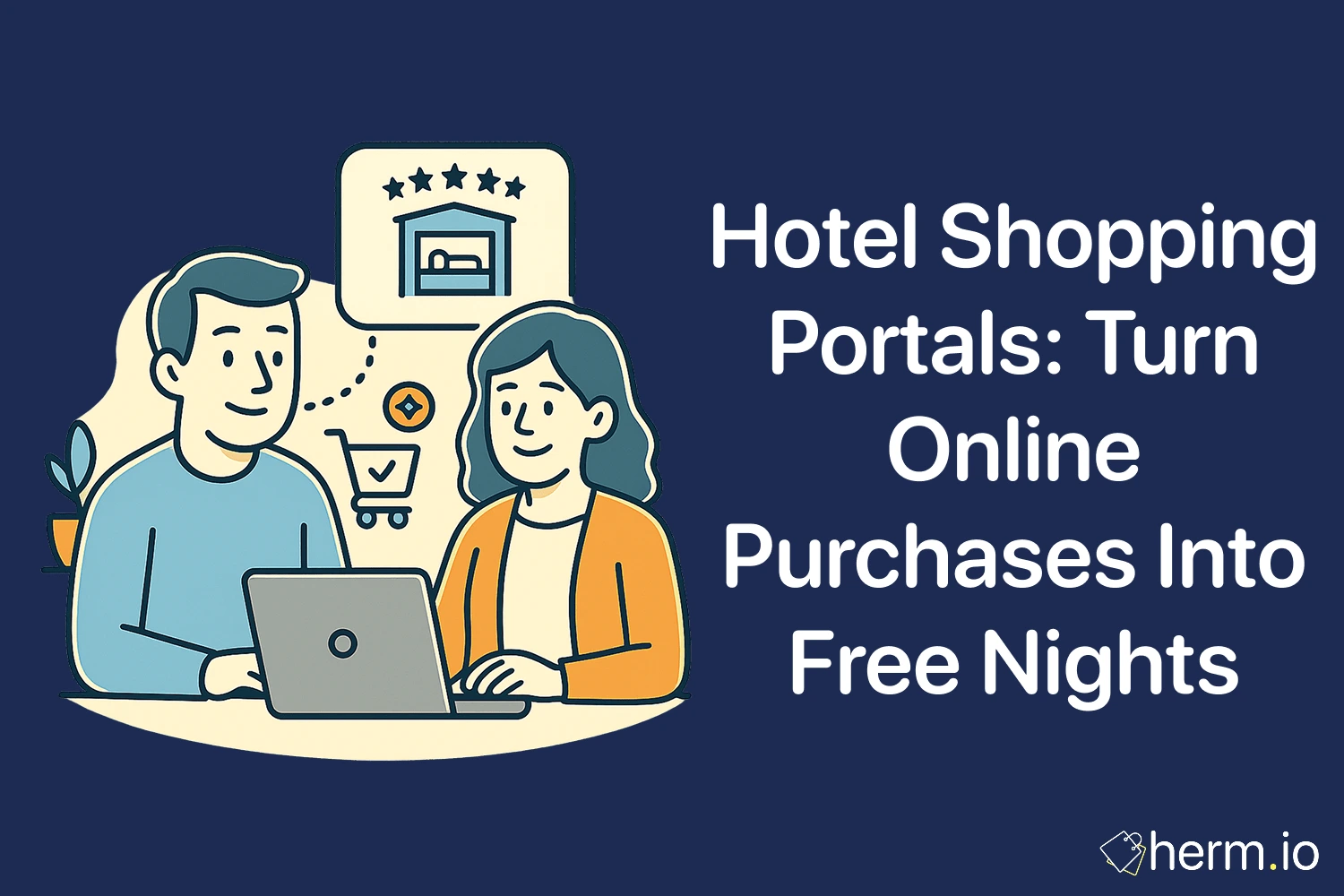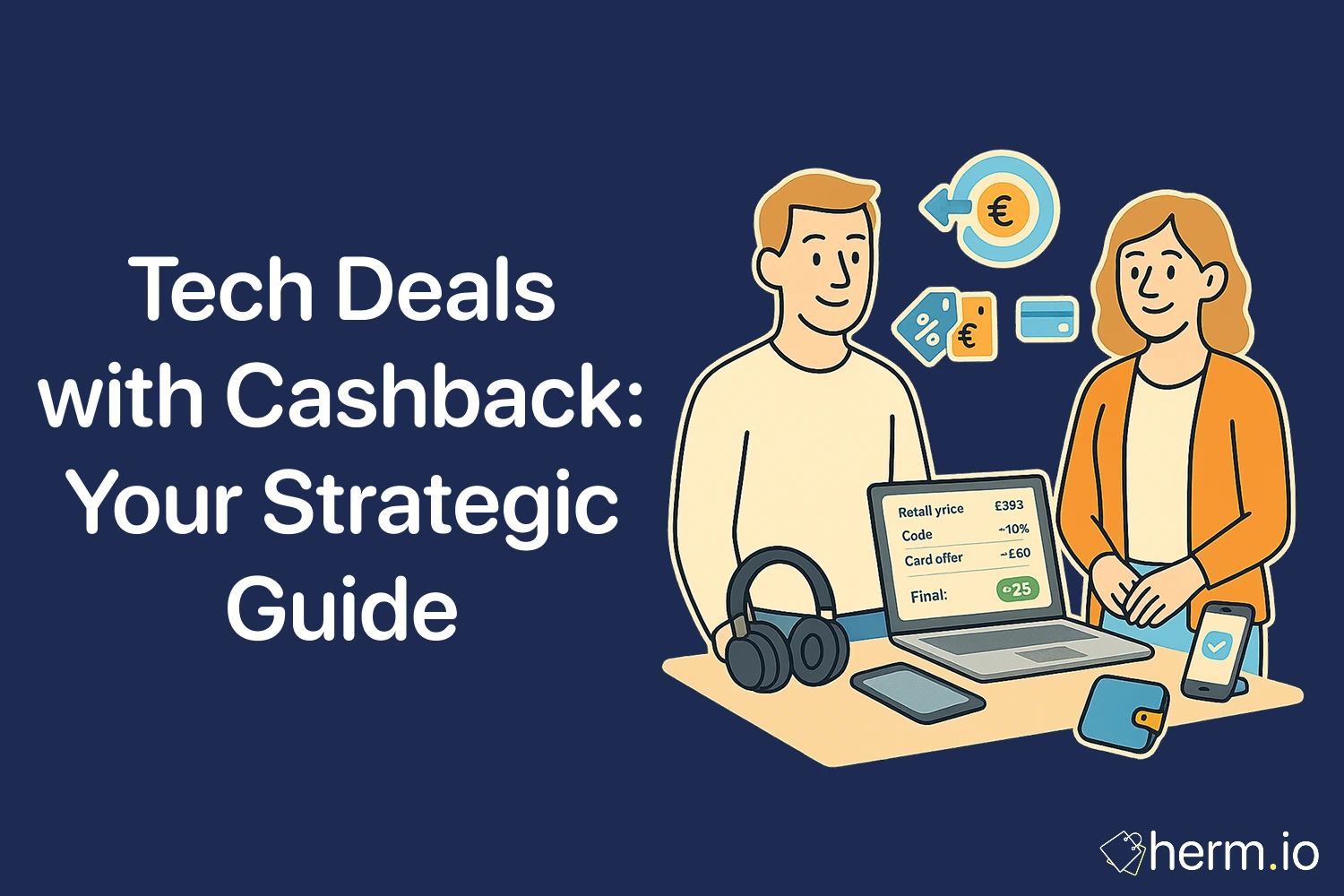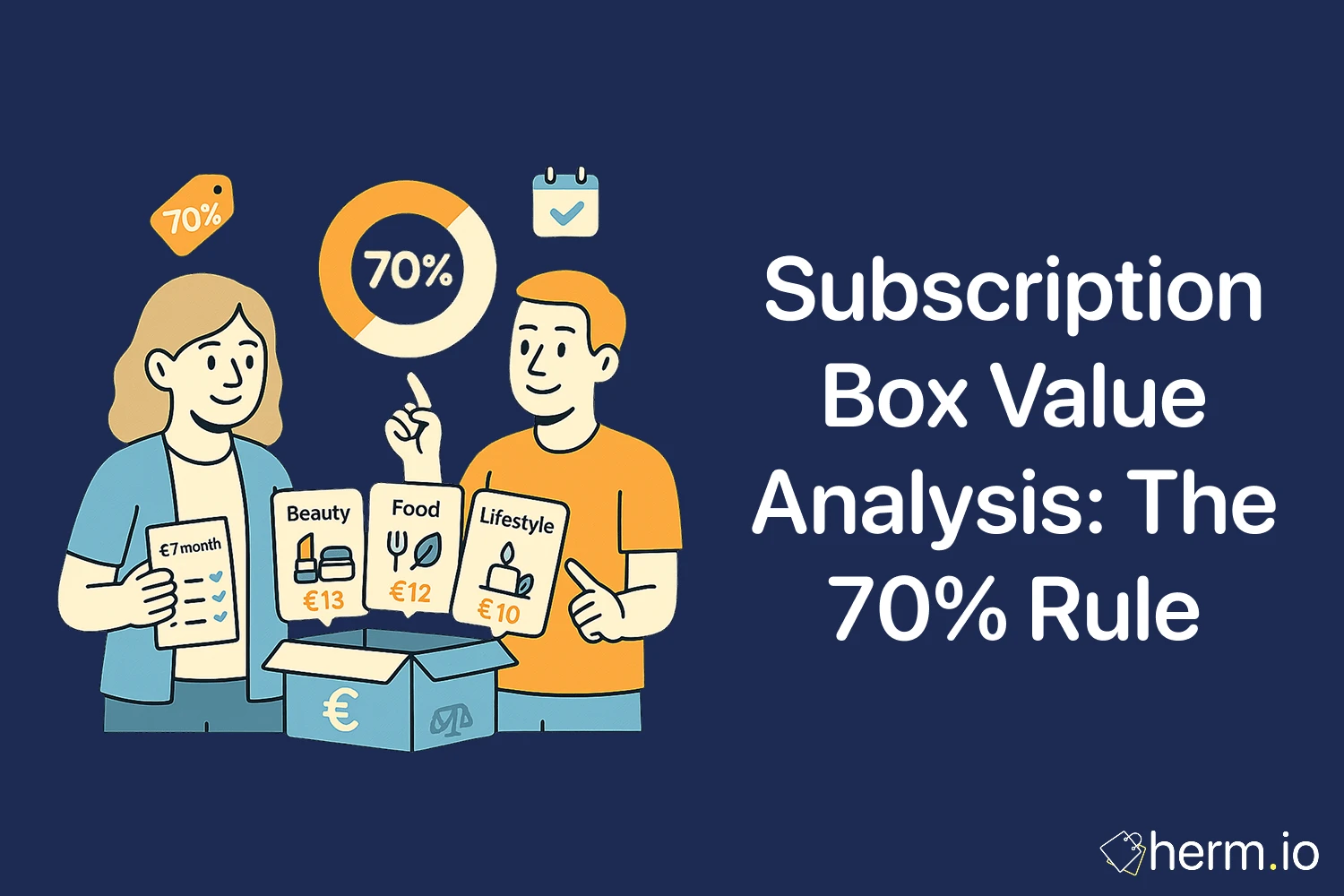
Most loyalty members leave thousands of hotel points on the table each year. The mechanism is straightforward: hotel shopping portals pay you points for purchases you're making anyway. Click through their portal before checkout, complete your order normally, and watch points accumulate toward your next redemption.
The difference between casual use and strategic implementation? Roughly 10,000-15,000 additional points annually for typical online shoppers. That's the gap between paying for an extra night and getting it free.
Quick Wins: Implement These Today
- Bookmark your primary hotel portal and one backup—check both before any purchase over £50
- Set up a simple tracking sheet: date, retailer, amount, rate, expected points
- Enable portal notifications for rate increases on your most-shopped retailers
- Screenshot the portal rate page and order confirmation for purchases over £100
- Read store exclusions before clicking through—30 seconds now prevents claim denials later
How Portal Economics Work
Hotel portals operate as affiliate marketers. Retailers pay them commissions; portals share part of that commission with you as loyalty points. Your job is capturing maximum value.
Rate structures vary significantly. Base rates typically range from 1-4 points per £1. Promotional rates can surge to 10-15 points per £1 during flash periods (usually 24-48 hours). A £200 fashion order at base rate nets 800 points; the same order during a 12-point promo earns 2,400 points. Strategic timing multiplies returns.
Tracking works via browser cookies. Click the retailer link on the portal; a tracking cookie marks your session. Complete checkout in that same browser session, and the purchase attributes to the portal. Breaking the chain—switching devices, using the retailer's app, clicking competitor links—loses the sale.
Credit timing follows retail return policies. Points typically appear as "pending" within 5-7 days, then post 30-90 days after purchase once the return window closes. Electronics and travel often extend to 120+ days.
The Stacking Framework
Single-layer rewards are inefficient. Strategic shoppers stack three layers:
Layer 1: Portal bonusSelect the highest current rate for your retailer. Rates change daily; 30 seconds of comparison before checkout captures promotional surges worth hundreds of additional points per order.
Layer 2: Credit card rewardsPay with cards offering category bonuses. A card earning 2-3x points on online shopping or department stores adds substantial parallel value. Credit card rewards and portal points are independent; you collect both.
Layer 3: Retailer loyaltyLog into the store's own programme before checkout. Store points, portal points, and card rewards all post independently from the same transaction.
Example calculation:£150 sports retailer purchase:
- Portal rate: 8 points/£1 (weekend promo) = 1,200 hotel points
- Credit card: 2x on online shopping = 300 card points
- Retailer programme: 150 store points
- Saved with 15% portal-listed coupon: £22.50
Total: Three reward streams plus immediate savings from one transaction.
Portal Selection Strategy
Choose your primary currency based on redemption value. If you consistently extract good value from Hilton stays (free breakfast, no resort fees via elite status), default to Hilton's portal. If Marriott fifth-night-free bookings suit your travel pattern better, prioritize Bonvoy Shopping.
Compare rates before every purchase anyway. Loyalty to one chain makes planning simpler, but promotional rates create exceptions. When one portal offers 12 points/£1 and your usual offers 2 points/£1, switch for that transaction.
Regional availability varies. UK shoppers typically access the widest retailer selection. EU shoppers should verify their country's portal coverage; some retailers appear only on specific regional portals. Match your shipping country to the portal country for reliable tracking.
Rate Comparison Process
The 30-second comparison:
- Open your primary portal and backup portal in separate tabs
- Search for your retailer on both
- Check current rates and any active promotions
- Select the higher rate; bookmark that specific retailer page
- Click through and complete checkout in one session
Promotional patterns worth noting:
- Weekend surges (Friday-Sunday) are common
- Holiday periods (Black Friday, Singles' Day) often feature site-wide multipliers
- Monthly spend bonuses ("Earn 2,000 points after £200 cumulative spend this month") stack with per-store rates
- First-purchase bonuses for new portal users typically range from 500-2,000 points
Tracking Protection
Missing points claims succeed when you document properly. Failed claims waste both the points and the time spent filing.
Minimum documentation:
- Screenshot of portal page showing retailer name, rate, and date
- Order confirmation with order number, subtotal, and date
- Keep both until points post (90+ days for most purchases)
Tracking sheet structure:Date | Retailer | Subtotal | Portal & Rate | Expected Points | Posted Date | Notes
Review weekly. Points posting 5-7 days late aren't concerning; points missing after 90 days require claim submission.
Common Tracking Failures
Ad blockers and privacy extensions interfere with tracking cookies. Disable for portal sessions or allowlist the portal domain. Sacrificing tracking to block one ad wastes substantially more value than the ad's annoyance cost.
Coupon browser extensions frequently override portal tracking by injecting their own affiliate links at checkout. Choose: use the extension and lose portal points, or disable it for portal sessions and keep the points. The portal's listed coupons usually match or beat extension-found codes anyway.
App checkout breaks tracking for most portals. If you must use a retailer's app, don't click through the portal first; you're wasting the click. Start the order in a browser via the portal, or skip the portal entirely for app purchases.
Excluded categories vary by retailer. Gift cards, marketplace sellers (third parties selling through the platform), in-store pickup, and certain clearance items commonly don't earn points. Read exclusions before clicking through.
Filing Missing Points Claims
Wait the stated timeframe first—typically 45-90 days. Premature claims get denied with "wait longer" responses that restart your timeline.
Claim form essentials:
- Exact date you clicked through (your screenshot proves this)
- Exact retailer name and portal rate advertised that day
- Order number and subtotal (excluding tax/shipping)
- Order confirmation screenshot
- Portal page screenshot
Response timeframes vary (7-30 days typically). Follow up once if you receive no response after their stated SLA. Escalate only after two contact attempts go unanswered.
Denial reasons:
- Used unapproved coupon code (codes not listed on portal page void tracking)
- Purchased excluded items (gift cards most commonly)
- Returned/refunded part or all of the order
- Checked out via app rather than browser
- Ad blocker prevented tracking
- Multiple portal clicks (last click wins; clicking a competitor portal after yours loses attribution)
Value Calculations
Conservative annual scenario for moderate online shoppers:
£1,200 annual online spending across apparel, beauty, home goods, small electronics:
- Average portal rate: 5 points/£1 (blending base rates with occasional promos) = 6,000 points
- Hit three strong promos annually (10-12 points/£1 on £300 total spend) = additional 3,000-4,500 points
- Total: 9,000-10,500 hotel points annually
That's enough to reduce redemption costs for a weekend away or accelerate progress toward elite qualifying thresholds. Larger households or frequent shoppers can easily double these figures.
Credit card rewards and retailer loyalty points add parallel value but don't count toward this hotel total.
Advanced Optimization
Household consolidation: If multiple family members shop online, route large purchases through one person's portal to concentrate points in a single account for faster redemptions.
Threshold bonus timing: Site-wide spend bonuses ("Spend £200, earn 2,000 bonus points") become targets worth planning around. Delay non-urgent purchases until a bonus period, then batch orders to clear the threshold.
Elite acceleration: Some hotel programmes count portal earnings toward annual elite qualification. If you're within 5,000-10,000 points of the next tier with a month left in the year, timing a large planned purchase through the portal can bridge the gap.
Browser profile separation: Create a dedicated browser profile for portal shopping with ad blockers disabled and no coupon extensions installed. Switch to that profile only for portal sessions. Keeps your main browsing setup unchanged while ensuring clean tracking.
Quarterly portal reviews: Retailer partnerships and rates change. Spend 15 minutes each quarter reviewing your most-shopped retailers across all portals to identify newly added stores or rate increases worth switching for.
Frequently Asked Questions
Will using portal gift cards void my points?
Buying gift cards through portals typically earns nothing; spending gift cards usually tracks normally if you click through the portal when redeeming them. The gift card itself doesn't interfere; just click through the portal at time of redemption.
Can I earn points on marketplace purchases through Amazon or eBay?
Generally no. Most portals exclude third-party marketplace sellers—only items "sold by" the main retailer qualify. Check specific portal terms; some make exceptions, but assume exclusion unless stated otherwise.
Do returns cancel my portal points?
Yes. Returned items reduce your points by the amount those items earned; full returns void the entire transaction's points. Partial returns reduce points proportionally.
Should I choose the portal with the highest rate even if I don't stay at that hotel chain?
Depends. If the rate difference is substantial (8 points/£1 vs. 2 points/£1) and you can eventually use those points for a worthwhile redemption, yes. If you'll never stay at that chain and can't transfer the points, stick with a currency you'll actually use.
Strategic portal use isn't complicated; it's systematic. Compare rates before purchases, click through before checkout, document large orders, track what posts, claim what doesn't. Those five habits convert ordinary online spending into tangible hotel value—free nights, elite perks, faster redemptions.
The difference between leaving 15,000 points unclaimed and capturing them? Thirty seconds per purchase plus quarterly optimization. Returns compound over years of consistent implementation.

Élodie Claire Moreau
I'm an account management professional with 12+ years of experience in campaign strategy, creative direction, and marketing personalization. I partner with marketing teams across industries to deliver results-driven campaigns that connect brands with real people through clear, empathetic communication.

.png)








.png)

.png)
.png)
.png)